Farmington River
Sustaining Life for Millions
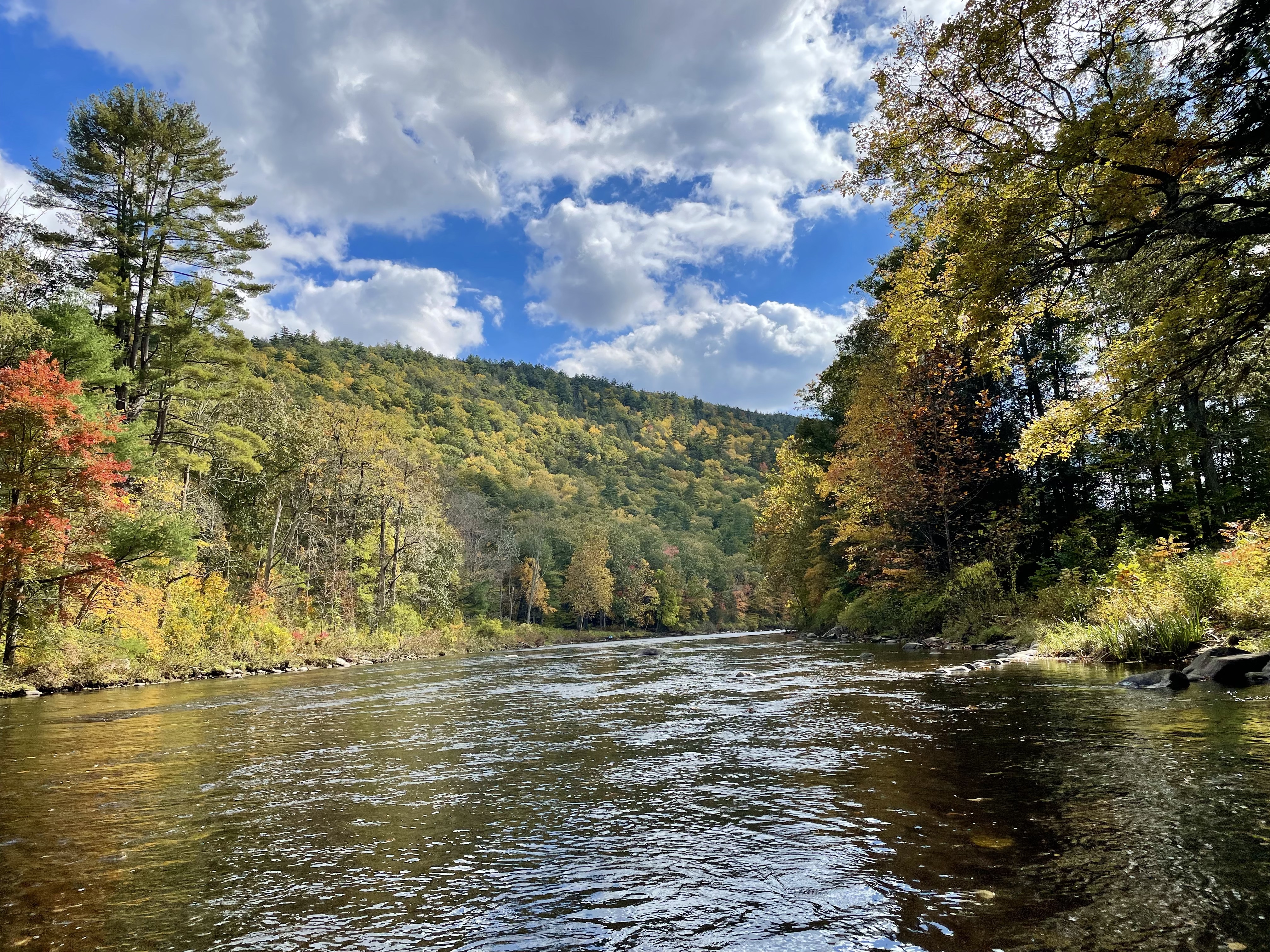
The Farmington River watershed covers over 600 square miles in Massachusetts and Connecticut. It holds two national Partnership Wild & Scenic River designations and is a major tributary to the Connecticut River. The watershed has been utilized and stewarded by Indigenous people for more than 12,000 years, and in the 1600s, Algonkian speaking groups such as the Tunxis and Mahican Tribes called this area home. Due to colonization and displacement, there are currently no federally recognized Tribal lands along the river, but descendants of these groups still live throughout Connecticut and surrounding areas.
The Farmington and its tributaries support cold-water resident fish species and habitat for various important migratory fish species. Anglers from around the northeast know the Farmington for its well-managed sport fishery that is sustained by the state’s hatcheries and aquatic habitat restoration and protection programs.
The river also supports a thriving paddling and tubing experience through the middle stretches of the watershed with challenging whitewater through the Satan’s Kingdom gorge.
Over the last decade significant progress has been made removing dams throughout the mainstem and tributaries which has opened up dozens of miles of habitat. Dam removals continue, including the pending removal in 2025 of the hazardous, low-head Lower Collinsville dam. One small former hydropower dam was retrofitted with state-of-the-art generation equipment as well as safe, timely, and effective up and downstream fish passage. The downstream eel passage facility at this project is unique among projects located in the United States.
Did you know?
The Farmington River is one of the largest tributary watersheds to the 410-mile long Connecticut River.
What states does the river cross?
Massachusetts and Connecticut
What’s new?
The Farmington River is listed as one of the 10 Most Endangered Rivers of 2024 due to the problems caused by the small and poorly maintained Rainbow Dam that violates environmental laws. Rainbow Dam is a hydropower facility owned by Stanley Black & Decker.
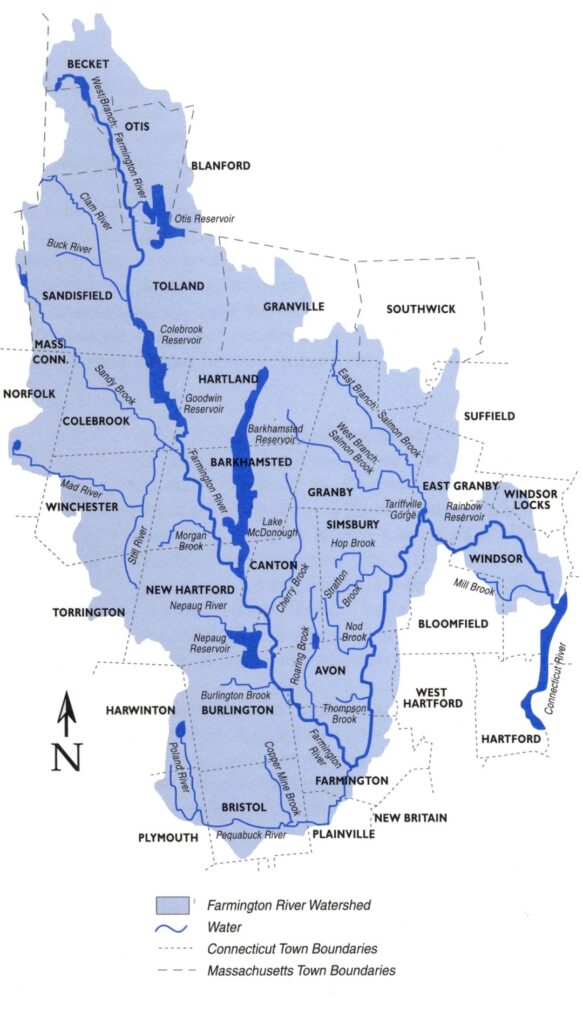
For rivers in the northeast the Farmington is unusually regulated and managed due to the presence of several drinking water reservoirs built throughout the 20th century to supply drinking water to the Hartford region. These impoundments and diversions are governed by a variety of contracts and management agreements that direct water to downstream users for recreation, fisheries management, and hydropower generation. Today over 400,000 people in an eight-town region around Hartford, the state capital, use water from the upper Farmington River reservoirs.
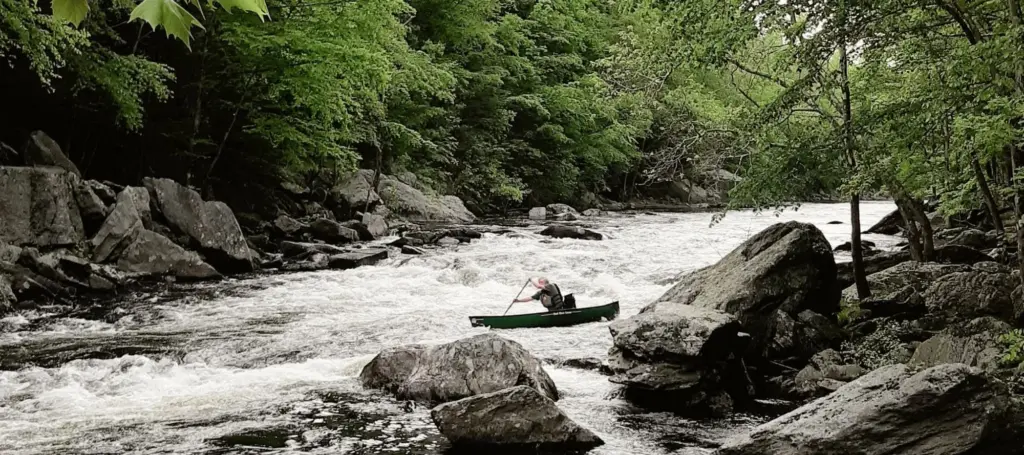
The spectacular resources of the Farmington River and its watershed have earned it national distinction including through two federal Wild & Scenic designations. In 1994 15 miles of the upper river were granted one of the early partnership designations, which created a collaborative working relationship between the National Park Service, local communities, businesses and conservation organizations. This first designation was followed by a second listing of 62 miles of the lower river and the Salmon Brook tributary in 2019. These designations and existing management agreements have created a strong network of collaboration among state and federal agencies, municipalities, conservation and angling groups, businesses, and the regional water utility.
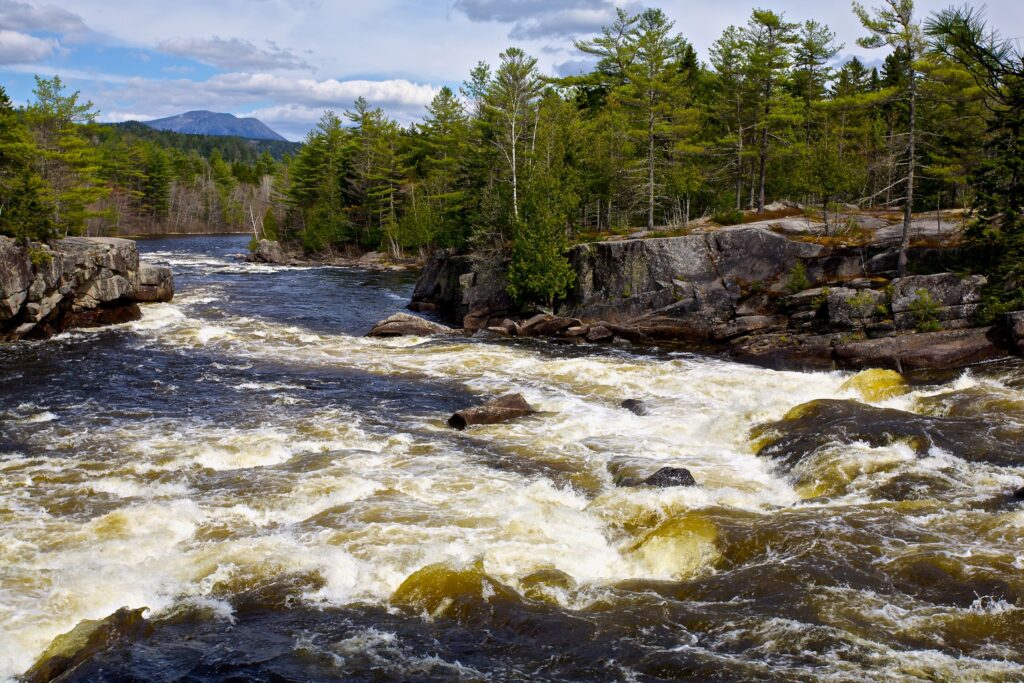
Let's stay in touch!
We’re hard at work in the Northeast for rivers and clean water. Sign up to get the most important news affecting your water and rivers delivered right to your inbox.
In 2023 a historic deal was reached that provided for permanent protection of the thousands of acres surrounding a now unused water supply reservoir. The protection of the lands surrounding the Colebrook Lake reservoir is a significant achievement realized through thoughtful actions of the state, conservation organizations, and the regional water utility.
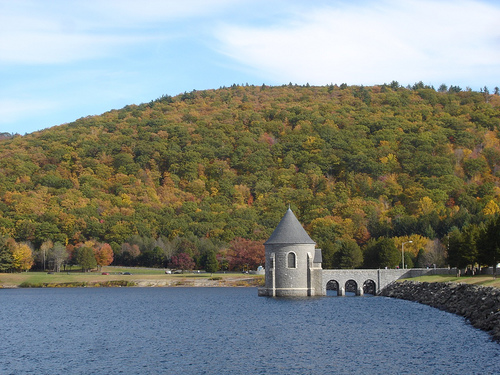
The Future
A vision of the future is often defined by an appreciation of the past. In the past the Farmington was a river that supported hundreds of thousands of migratory fish including salmon, shad, river herring, eels, and lamprey.
A future that brings those fish back is threatened by the first dam in the watershed.
Eight miles upstream from where the Farmington River joins the Connecticut River is the Rainbow Dam, owned by the FRPC. This small hydropower dam has been in operation since the early 20th century, but due to a quirk of law, it has no federal oversight. Federal regulation of hydropower dams requires that a river be deemed “navigable,” and over fifty years ago the Farmington–despite its significant flows and many boaters consistently using the river–was ruled “non-navigable” by the federal government.
The resulting lack of federal oversight and limited state jurisdiction has allowed this small and poorly maintained hydropower project, whose inadequate and outdated fishway often led to fish mortality before it was shut down in 2023, to effectively render more than 95% of the watershed’s habitat inaccessible to river herring, shad, eel, and sea lamprey. The dam is also responsible for creating river conditions in the upstream reservoir that have repeatedly caused toxic algae blooms that can be a health hazard to people, and can be lethal to pets and wildlife. These blooms have forced the state to seasonally close a public boat ramp and a summer camp located on the river to prohibit swimming and boating during periods of the summer. The FRPC’s operation of the dam releases large pulses of water at unpredictable times, harming aquatic life. The state has said these flows harm the river, and the section below the dam is listed as impaired for aquatic life due to flow. Because of its current operation and failure to safely pass migratory fish, the Rainbow Dam causes the Farmington River to be in violation of the federal Clean Water Act and state laws.
Partners working in the watershed
The Farmington River Watershed Association has been working to protect and restore the watershed since 1954.
The Lower Farmington River Wild & Scenic Committee is the partnership working in the nine towns of the lower watershed.
The Farmington River Coordinating Committee works for the long-term protection of the upper watershed
